Frontline Heroines Who Refused to Take a Step Back During World War II
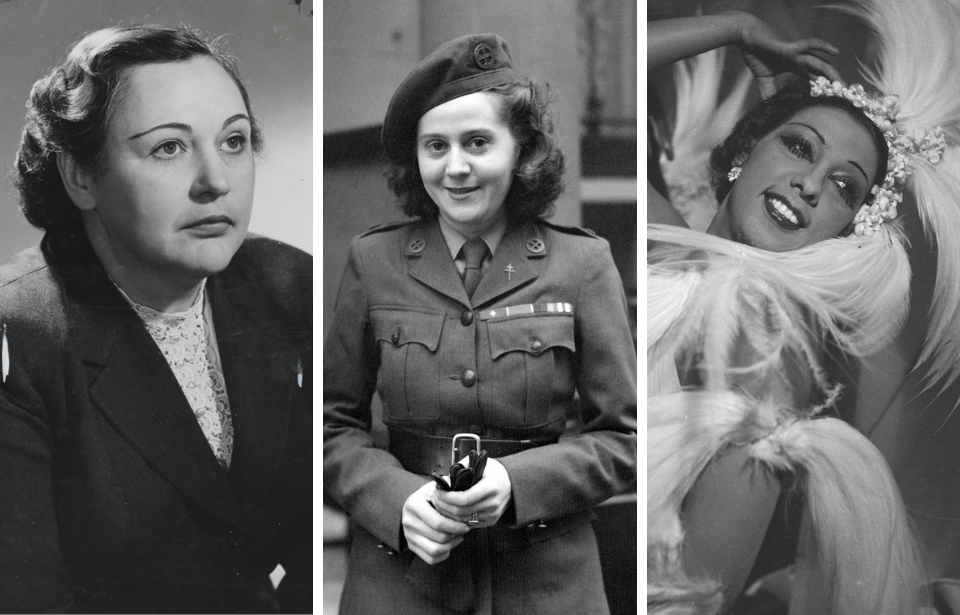
There were several unsung heroes in World War II, many of them women. Coming from all walks of life, these brave individuals put their lives on the line to fight for a just cause, and each left an indelible mark on history. From agents and snipers, to leaders within the military, the following nine women proved their mettle in the midst of danger.
Nancy Wake
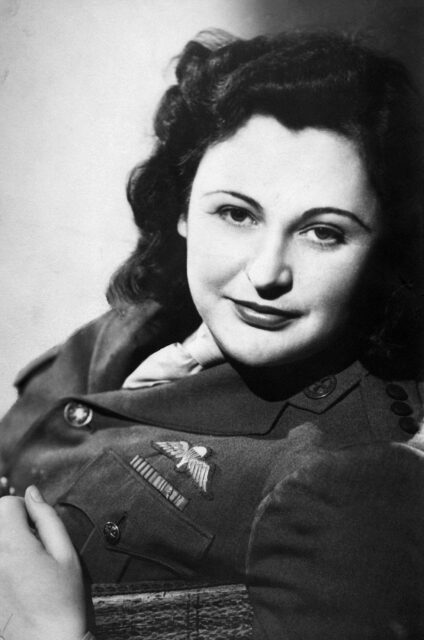
Nancy Wake, 1945. (Photo Credit: Unknown Author / Australian War Memorial / Wikimedia Commons / Public Domain)
Nancy Wake – known by the nickname, “The White Mouse,” for her ability to evade capture – was a crucial operative of the Special Operations Executive (SOE) during World War II. Born in New Zealand and raised in Australia, she pursued a journalism career that saw her travel to the likes of New York and Europe. While stationed in the latter, she saw firsthand the rise of Germany’s new government.
Following her marriage to Frenchman Henri Edmond Fiocca, she joined the Pat O’Leary Line, aiding downed Allied pilots as part of the Resistance. She’s credited with having saved hundreds of aviators over the course of her three years with the group, and her efforts ultimately resulted in a five million Franc bounty being placed on her head by the Germans. To avoid capture, she traveled to the United Kingdom, while her husband stayed behind.
Upon learning of Fiocca’s capture and execution by the Gestapo, Wake joined the SOE and returned to France, where she aided in planning Resistance efforts for D-Day. She followed this up with combat against German troops, including members of the SS.
Lyudmila Pavlichenko
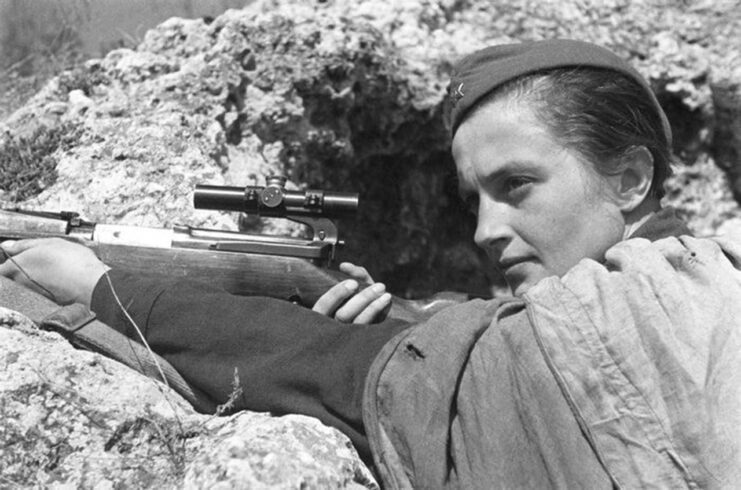
Lyudmila Pavlichenko. (Photo Credit: Израиль Абрамович Озерский / Wikimedia Commons / Public Domain)
Known as “Lady Death,” Lyudmila Pavlichenko was a female sniper who served in the Soviet Red Army during World War II. She was one of the deadliest in history, with 309 confirmed kills.
Pavlichenko enlisted in the Red Army in 1941, following the German invasion of the Soviet Union. While initially told she’d be a nurse, she was determined to not let her gender define her role in the military and, upon demonstrating her skills, was made an infantryman. Serving with the 25th Rifle Division, she fought in the sieges of Odessa and Sevastopol. She became so well-known on the Eastern Front that it’s alleged that the Germans even attempted to bribe her.
Following her action on the battlefield, Pavlichenko was sent to the United States to help drum up support for opening a second front against Germany. She ultimately befriended First Lady Eleanor Roosevelt, who persuaded her to tour the country and talk about her experiences.
Susan Ahn Cuddy
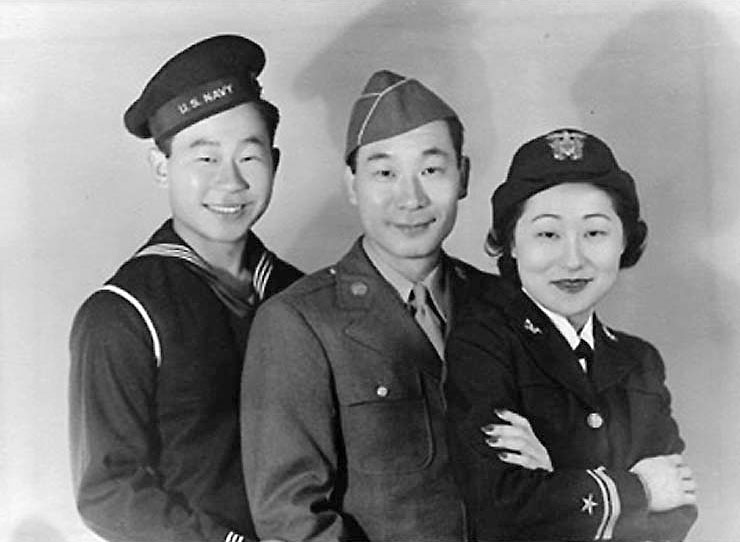
Susan Ahn Cuddy with her siblings, Ralph and Philip. (Photo Credit: U.S. Naval History and Heritage Command / Wikimedia Commons / Public Domain)
Susan Ahn Cuddy broke significant barriers as the first Asian American woman to enlist in the US Navy. Following the Japanese attack on Pearl Harbor in December 1941, she and her two brothers were determined to serve their country: Philip was accepted into the Army, while Ralph joined the Navy.
Cuddy first attempted to enlist in the Women Accepted for Voluntary Emergency Service (WAVES), but was denied. She didn’t let this deter her, however, as she applied for and was accepted to the US Naval Reserve Midshipman’s School. She dedicated herself to her service, working first as an instructor on flight simulators, before becoming the Navy’s first female aerial gunnery officer.
Cuddy’s leadership and expertise earned her the rank of lieutenant. After the conflict, she continued her public service with US Naval Intelligence and the National Security Agency (NSA), contributing to Cold War-era intelligence efforts.
Freddie and Truus Oversteegen
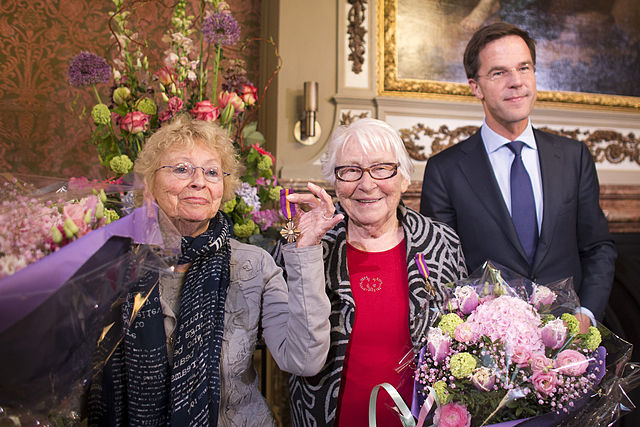
Freddie and Truus Oversteegen with Dutch Prime Minister Mark Rutte, 2014. (Photo Credit: Ministerie van Defensie / Wikimedia Commons CC0 1.0)
Sisters Freddie and Truus Oversteegen joined the Dutch Resistance during World War II, following the German invasion of the Netherlands. Inspired by their mother, a Communist who taught them the importance of fighting injustice, the pair began their efforts by distributing anti-German pamphlets, before leveling up their resistance to include more direct sabotage.
Working under Frans van der Wiel, the commander of the Haarlem Resistance Group, the pair blew up bridges and railroads and helped to smuggle Jewish children out of the country. Using their gender and looks, they could get much closer to the enemy than their male counterparts and, before long, they were tasked with carrying out assassinations.
Teaming up with Hannie Schaft in 1943, the trio formed a sabotage cell so deadly that, by the end of the conflict, there was a 50,000-Guilder bounty on their heads.
Joséphine Baker
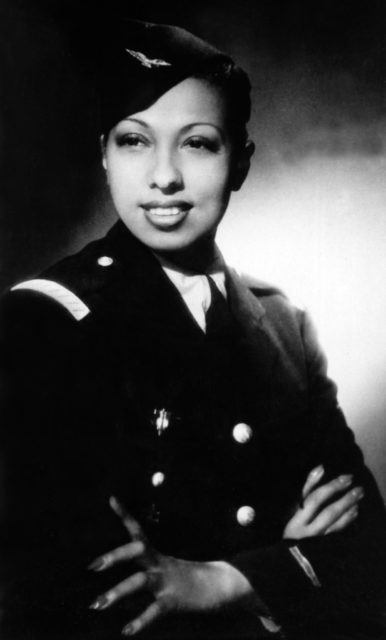
Joséphine Baker, 1945. (Photo Credit: ullstein bild / Getty Images)
Josephine Baker was an African-American entertainer who became a crucial spy for the French Resistance during World War II. Becoming a French citizen in 1937, she leveraged her celebrity status to aid the efforts of the Deuxième Bureau de l’Etat-major général – France’s military intelligence agency. She gathered intelligence from Axis officials at embassy parties, often smuggling critical information to the government-in-exile in London, United Kingdom, written in invisible ink on her sheet music.
Before long, Baker found herself in North Africa, where she continued to work with the Resistance, using her connections to get Jewish people passports. She continued these efforts even after she fell ill, holding meetings with key officials at her bed.
Virginia Hall
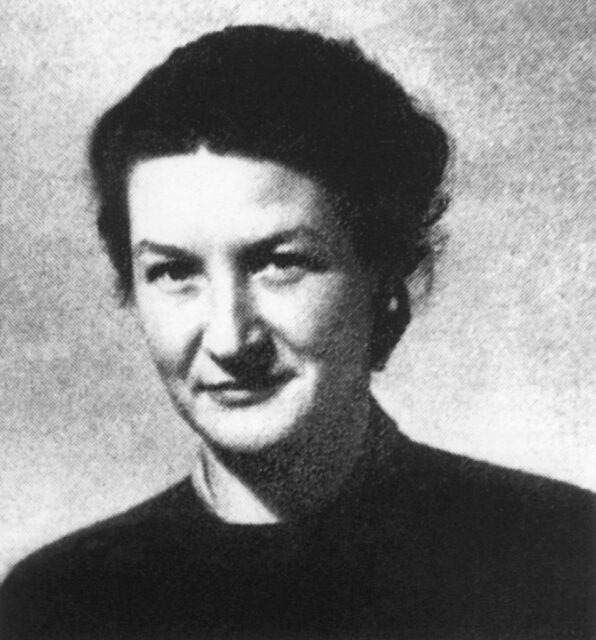
Virginia Hall. (Photo Credit: Apic / Getty Images)
Virginia Hall, an American spy during World War II, became one of the most effective and elusive operatives in German-occupied France. Despite having a prosthetic leg, she joined the Special Operations Executive, for whom she collected intelligence, ran spy networks and aided members of the French Resistance. She became so good at her job that the Gestapo even nicknamed her “The Limping Lady.”
Narrowly escaping once her cover was blown, she subsequently joined the Office of Strategic Services (OSS), which gave her the opportunity to return to France, this time disguised as an elderly milkmaid. In the lead-up to Operation Dragoon in 1944, Hall traveled across the southern portion of the country to arm and organize Resistance members.
Hall was awarded the Distinguished Service Cross, becoming the only civilian woman to receive the honor during World War II. She continued her career with the Central Intelligence Agency (CIA), and returned to France during the Cold War to lead secret paramilitary operations, in case of an attack by the Soviets.
Hannie Schaft
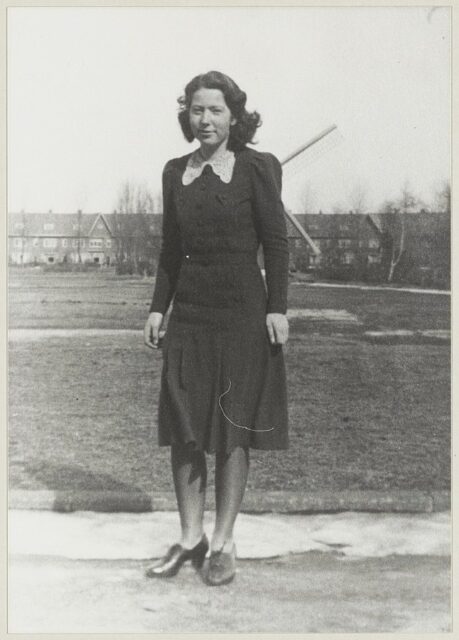
Hannie Schaft. (Photo Credit: Collectie Fotoburo de Boer / Cees de Boer / Wikimedia Commons CC0 1.0)
Hannie Schaft – known as “The Girl with the Red Hair” – was a crucial member of the Dutch Resistance during World War II. She had a life-long interest in law, with a goal of becoming a human rights lawyer when she got older. As such, it’s no surprise she was involved in Resistance efforts following the German invasion of the Netherlands.
Schaft initially focused on small acts, such as stealing identification cards for Jewish people, but she quickly escalated to more dangerous missions. Working with the Oversteegen sisters, she used her good looks to seduce German officers, and she would assassinate and sabotage targets. When the enemy caught on to her, she dyed her hair black and donned glasses as a disguise.
Arrested at a military checkpoint in March 1945, Schaft was interrogated, tortured and executed. Her legacy is honored in the Netherlands, with numerous streets and schools named for her.
Florence Finch
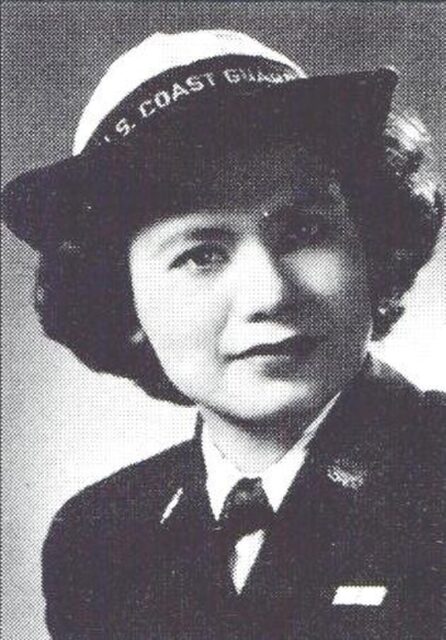
Florence Finch, 1945. (Photo Credit: U.S. Coast Guard / Wikimedia Commons / Public Domain)
Florence Finch was born to an American father and a Filipino mother while the Philippines were under American colonial rule. At the time of the Japanese invasion of the islands, she was working with the US Army in Manila.
After her American husband was killed in action, Finch used her heritage to assist the underground resistance movement, getting a job at a Japanese-controlled fuel depot. While in this position, she diverted supplies to guerrillas and prisoners of war (POWs), forged documents and performed other types of sabotage. When the Japanese learned of these efforts, they arrested, tortured and imprisoned her, with her held captive until the Philippines were liberated by the Americans.
Charity Adams
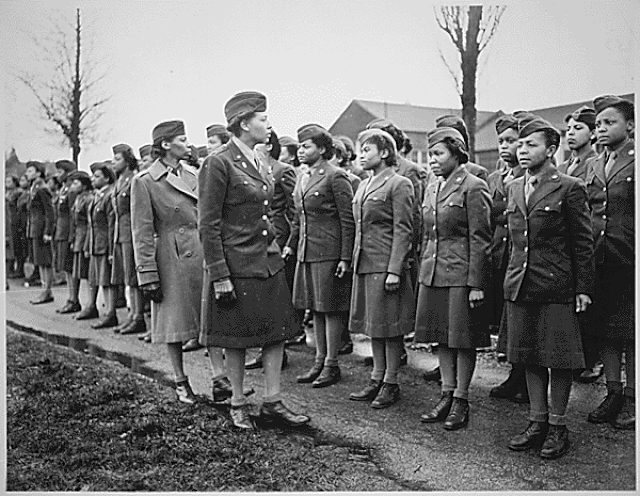
Charity Adams with the 6888th Central Postal Directory Battalion, 1945. (Photo Credit: Unknown Author / NARA / Wikimedia Commons / Public Domain)
Charity Adams was not only the first African-American woman to be an officer in the Women’s Army Auxiliary Corps (later the Women’s Army Corps) – she was also the highest-ranking in the US Army by the end of World War II.
Adams was given command of the 6888th Central Postal Directory Battalion, the only battalion of Black women to serve in the European Theater during the conflict. Their job was to sort and send what seemed to be a never-ending backlog of mail, sorting through 65,000 pieces each shift. While initially given six months to complete their task, they did it in three.
Throughout her service, Adams faced both racial and gender discrimination. She followed up her wartime efforts with a brief stint with the Department of Defense, before requesting a discharge in 1946.
Odette Sansom
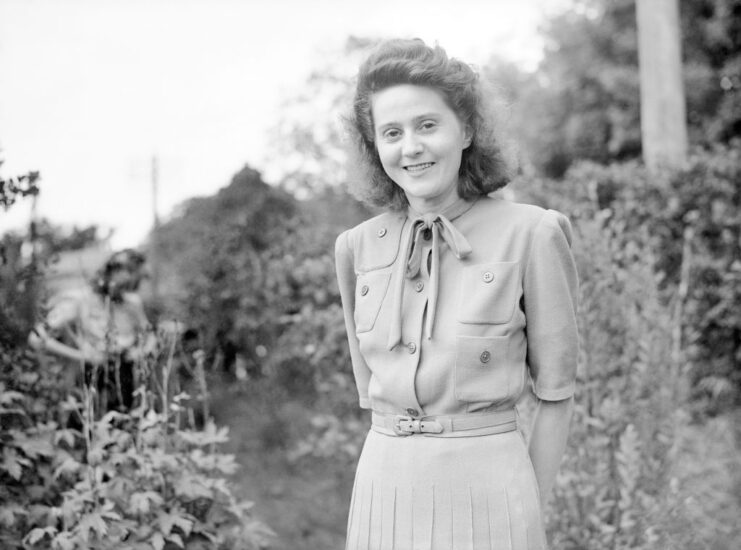
Odette Sansom, 1946. (Photo Credit: PA Images / Getty Images)
Odette Sansom, a French-born Special Operations Executive agent, became the first woman awarded the George Cross for her bravery during World War II. Initially recruited for her French background and British allegiance, she underwent extensive training in espionage and survival techniques, and while her results were less than stellar, her dedication and patriotism were enough to secure her a deployment to German-occupied France.
Joining the SPINDLE circuit, she worked alongside members of the French Resistance and set up safe houses. She was captured by the Germans in 1943, and, despite being subjected to torture, refused to give the enemy any information – she even claimed to be the leader of her group, to take the heat off of her boss.
More from us: The Battle of the Atlantic Was a Never-Ending Fight for Control of the High Seas
Sansom was ultimately sent to Ravensbrück concentration camp, where she remained until 1945.





